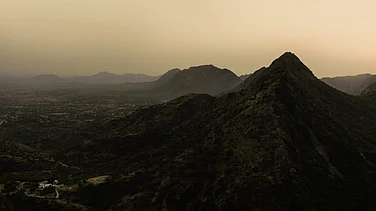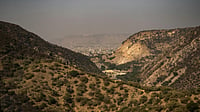
State orders geological probe after flash flood devastates Dharali; team to submit findings within a week.
ISRO images show Bhagirathi River changed course, raising concerns over erosion and long-term disaster risk.
Death toll revised to one, despite initial reports of four.
A committee has been formed to look into the causes of the disaster that occurred at Dharali in Uttarkashi district of Uttarakhand on August 5, 2025.
Chief Secretary Anand Bardhan directed the disaster management and rehabilitation secretary on the evening of August 9 to send a team of geologists to Dharali for probing the causes of the disaster.
Disaster Management Secretary Vinod Kumar Suman said a letter has been sent to the director of the geology and mining department to send a three-member team to the area. This team will submit its report to the government in a week.
People in Dharali need shelter, according to Madhavendra Rawat, an apple orchardist and social worker from Harshil.
Rawat told Down To Earth (DTE) that the debris in Dharali market is 40-50 feet deep. It is thus almost impossible to carry out a rescue operation in a normal manner. Digging is being done wherever sniffer dogs are detecting any sign of life. Apart from this, thermal imaging and cameras that can locate victims are also being used.
Death Toll Revised
Even after five days of the destruction in Dharali caused by the overflowing of the Kheer Ganga river, challenges of the relief and rescue operations have not reduced. According to DTE, the death toll in this tragedy has ‘decreased’ to only one person.
The press statements issued by the Uttarkashi district administration and the state government’s disaster control centre contain detailed information about the rescue operations. However, these do not reveal the total number of lives lost in the disaster and number of people missing.
The initial reports suggested that four deaths had been recorded and now, Uttarkashi’s district disaster officer Shardul Gusain told DTE that only one person has been confirmed dead so far.
Meanwhile, the satellite imagery from ISRO showed that the flash flood in Dharali reshaped the Bhagirathi River’s course, leading to significant widening of the channel and returning it closer to its earlier path and pushing the Bhagirathi towards the right bank. This raises concerns about long-term downstream erosion and emphasises the importance of incorporating geomorphological risks into future disaster preparedness plans.
The cloudburst occurred in an uninhabited region of Uttarkashi, but no advance forecast of heavy rainfall was issued.
According to the Garhwal Post, it is being speculated that excessive rainfall in higher elevations led to a rapid collection of water that surged downstream. A detailed scientific inquiry will be launched to identify the cause and mitigate future risks.




























